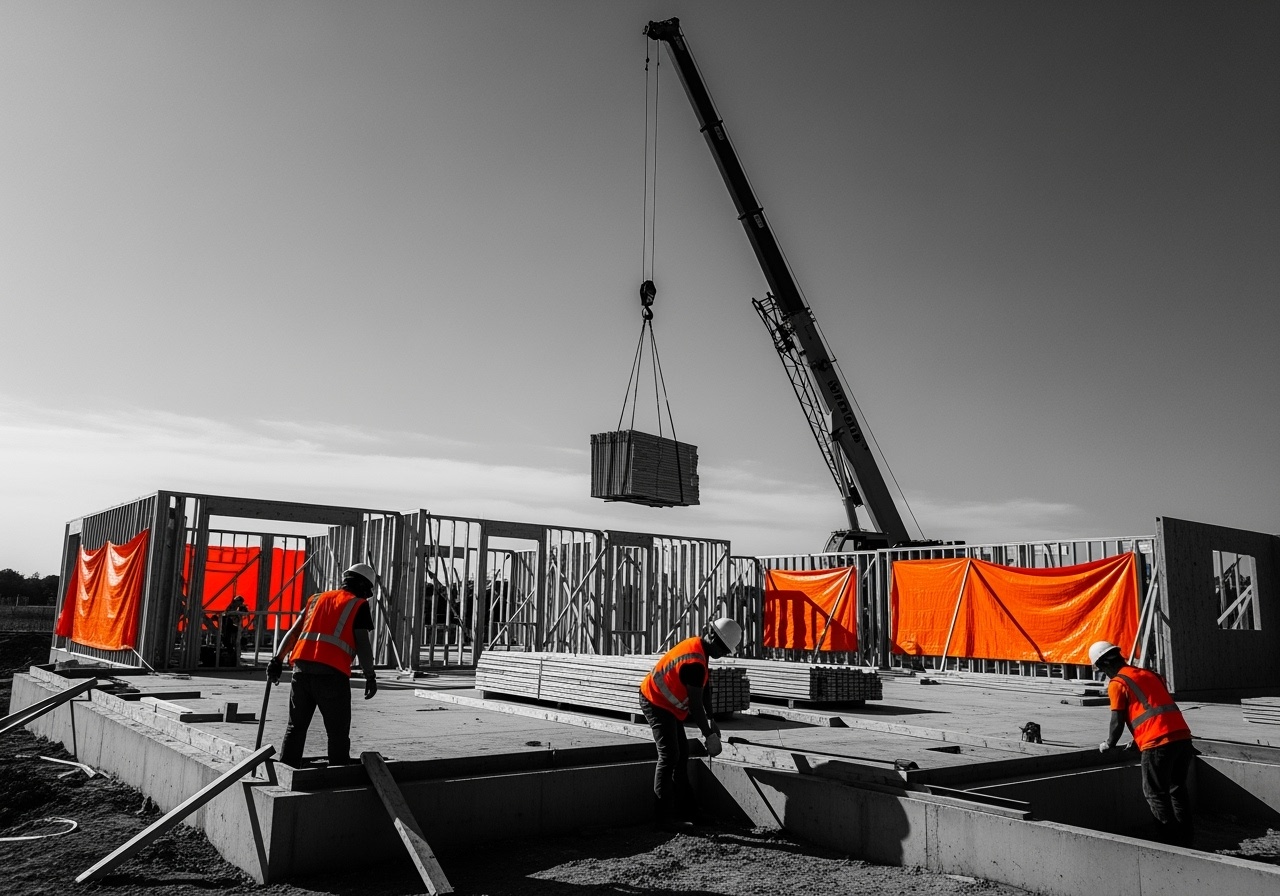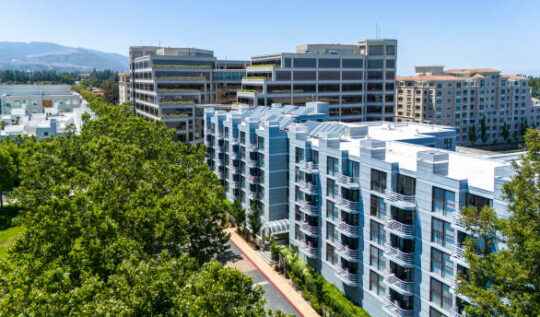From Empty Lot to Luxury Home: The 6 Steps of LA Development
Turning Your Dream Into Reality, One Step at a Time
Transforming a bare plot of land into a luxury home in Los Angeles isn’t as simple as picking a design and starting construction. The process is layered, technical, and full of potential pitfalls. Without expert guidance, what looks like a dream project can quickly become a costly headache. That’s where JDJ Consulting Group comes in — guiding homeowners, investors, and developers through every step, from empty lot to move-in ready luxury home.
Table of Contents
ToggleTo make it easy to understand, we’ll break down the journey into six key steps. We will explain what each involves, why it matters, and how JDJ can help.
1st Step – Due Diligence: Know What You’re Buying
Before you even dream about a grand staircase or a chef’s kitchen, you need to understand what you’re buying. Due diligence is about getting the full picture of your lot: zoning rules, environmental restrictions, neighborhood trends, and hidden risks.
Why does it matter? Skipping this step can lead to major surprises later — like discovering your lot isn’t zoned for the size home you want, or that it sits on soil prone to landslides. In Los Angeles, where regulations and neighborhood rules vary block by block, this step is non-negotiable.
Step-by-Step LA Development Infographic
How JDJ helps: Our team evaluates every lot’s legal and environmental constraints before you buy. We help clients identify risks early and provide a clear feasibility snapshot. This way, you make informed decisions and avoid costly missteps.
2nd Step – Feasibility Study: Can the Vision Work Here?
Once you know the lot’s limitations, the next step is figuring out what’s actually possible. A feasibility study looks at your budget, lot size, and city regulations to determine the realistic scope of your project.
For example, you might dream of a sprawling hillside mansion, but city setbacks, zoning codes, and neighborhood overlays could limit the footprint or style. A proper feasibility study ensures your vision matches what’s legally and practically achievable.
How JDJ helps: JDJ Consulting Group guides clients through detailed feasibility analysis. We balance aspirations with reality, projecting costs, timelines, and potential hurdles. This gives you a roadmap for the rest of the project, avoiding surprises down the line.
3rd Step – Entitlements: Securing Legal Approvals
Even the best-laid plans hit a wall if you don’t have the right approvals. Entitlements are your legal green light to build — variances, exceptions, or special permits required by the city before construction can start.
Why it matters: Without proper entitlements, you could face fines, forced redesigns, or even project shutdowns. In Los Angeles, entitlement rules can be complicated, with layers of city, neighborhood, and environmental requirements. Skipping this step is a recipe for costly delays.
How JDJ helps: Our team specializes in navigating LA’s complex entitlement landscape. We manage the paperwork, meet with city officials, and make sure every legal box is checked so your project stays on track. With JDJ, you’re not just waiting on approvals — you’re actively moving the project forward.
LA Development Timeline
4th Step – Permits: Legal Green Light to Build
Once entitlements are secured, it’s time for permits. These are the city’s confirmation that your construction plans meet safety and code standards — everything from grading and foundation work to inspections throughout construction.
Why it matters: Permits aren’t just bureaucracy; they protect your investment. They ensure your home is built safely and according to law, avoiding fines or costly corrections later.
How JDJ helps: Pulling permits in LA can be tedious and time-consuming. JDJ Consulting Group handles applications, coordinates inspections, and keeps approvals moving efficiently. We minimize delays, so your project doesn’t stall before the first shovel hits the ground.
5th Step – Community Outreach: Building Support
Building a luxury home isn’t just about permits and plans — it’s also about people. Engaging neighbors, homeowner associations, and local community boards early can prevent objections that slow down or derail your project.
Why it matters: Projects often stall because someone in the community raises concerns or files complaints. By proactively communicating and addressing concerns, you build goodwill and smooth the approval process.
How JDJ helps: JDJ coordinates community outreach for clients, organizing meetings, presentations, and follow-ups. We make sure local stakeholders understand the project and feel heard, reducing opposition and keeping approvals on schedule.

6th Step – Construction: From Groundbreaking to Luxury Home
Finally, the dream becomes reality. Construction is where your plans, permits, and approvals turn into a tangible home. This includes working with contractors, coordinating inspections, and ensuring quality control every step of the way.
Why it matters: Construction is the most visible and expensive phase. Without proper oversight, timelines slip, budgets explode, and quality suffers.
How JDJ helps: JDJ provides project oversight to keep construction on time, on budget, and fully compliant with LA regulations. From groundbreaking to final walkthrough, we guide the process so your luxury home becomes exactly what you envisioned.

Turn Your Lot Into a Luxury Home
Transforming an empty lot into a luxury home in Los Angeles is a journey with many steps — due diligence, feasibility, entitlements, permits, community outreach, and construction. Each stage is essential, and missing one can delay or derail the project.
With JDJ Consulting Group, you get end-to-end guidance, ensuring each step flows smoothly from start to finish. Ready to turn your LA lot into the luxury home of your dreams?
Contact JDJ Consulting today and start your journey with confidence.
FAQs: Steps of LA Development
1. What is the first step in developing a property in Los Angeles?
The first step is usually land acquisition and due diligence, including researching zoning regulations, property history, and potential development considerations to ensure the site is suitable for your project.
2. How do I apply for a building permit in Los Angeles?
You submit a permit application to the Los Angeles Department of Building and Safety (LADBS), including architectural plans, structural calculations, and compliance with building codes, HVAC systems, and safety standards.
3. What are development services in LA?
Development services include assistance with entitlements, permits, inspections, and guidance on land use policies, environmental review, and compliance with the California Environmental Quality Act (CEQA).
4. When are Conditional Use Permits (CUPs) required?
CUPs are needed when a project proposes a use that is not automatically allowed under current zoning permissions. Approval usually involves public hearings and review by City Planning staff.
5. What role does City Planning play in property development?
LA City Planning evaluates projects for zoning compliance, land use policies, and development review functions, including variances, conditional uses, and specialized services for complex properties.
6. How do zoning regulations affect my project?
Zoning restrictions determine allowable land uses, building height, density, and setbacks. Understanding these rules early prevents costly design revisions during permit application.
7. What is a Certificate of Occupancy (CO)?
A CO confirms that a building has passed all inspection requirements, complies with building codes, and is safe for occupancy. You need it before moving in or selling the property.
8. How does community engagement impact development?
Engaging the community through public hearings or meetings helps address concerns, meets City Planning requirements, and can smooth the approval process for development applications.
9. What is an Environmental Impact Report (EIR)?
An EIR is required under CEQA for larger projects to assess environmental effects, such as noise, traffic, and air quality, and propose mitigation measures before approval.
10. What types of inspections for construction are required?
Inspections cover electrical, plumbing, and mechanical permits, structural framing, foundation, HVAC systems, and final building safety before issuing the Certificate of Occupancy.
11. What is the permitting process timeline in LA?
The process typically involves submitting plans, review by Development Services Center, possible corrections, scheduling inspections, and final approval. Large projects may require multiple separate approvals.
12. Can I use an Express Permit for faster approval?
Yes. The Express Permit program allows certain minor projects to be approved quickly, bypassing lengthy review steps while still following LADBS permit requirements.
13. How do feasibility studies help before building?
Feasibility studies evaluate project scope, costs, potential bank loans, land acquisition, and regulatory constraints to ensure the project is financially and logistically viable.
14. What are development applications?
These are formal submissions to the city requesting approval for construction, zoning variances, or conditional use permits, including all required plans, land use policies, and environmental assessments.
15. Who can assist with complex land or large-scale projects?
Specialized professionals, including general contractors, interior designers, and JDJ Consulting Group, provide development services, guidance on land use policies, and manage approvals from City Planning and Development Services Center.





